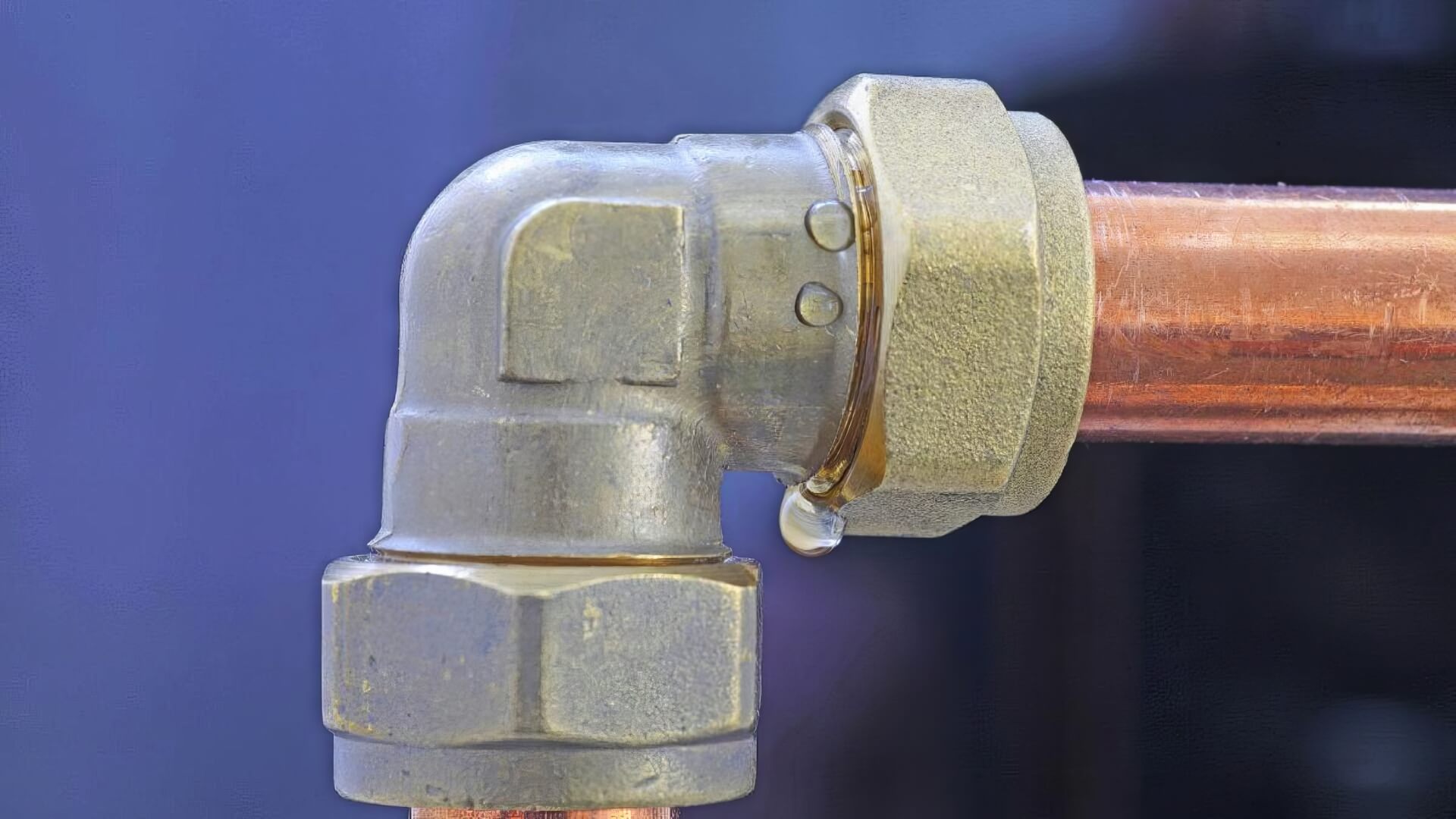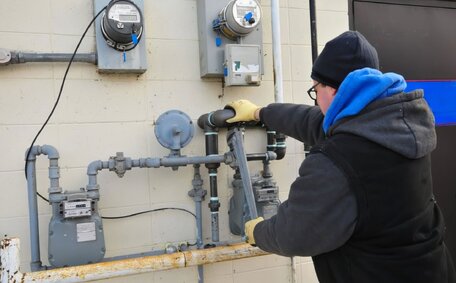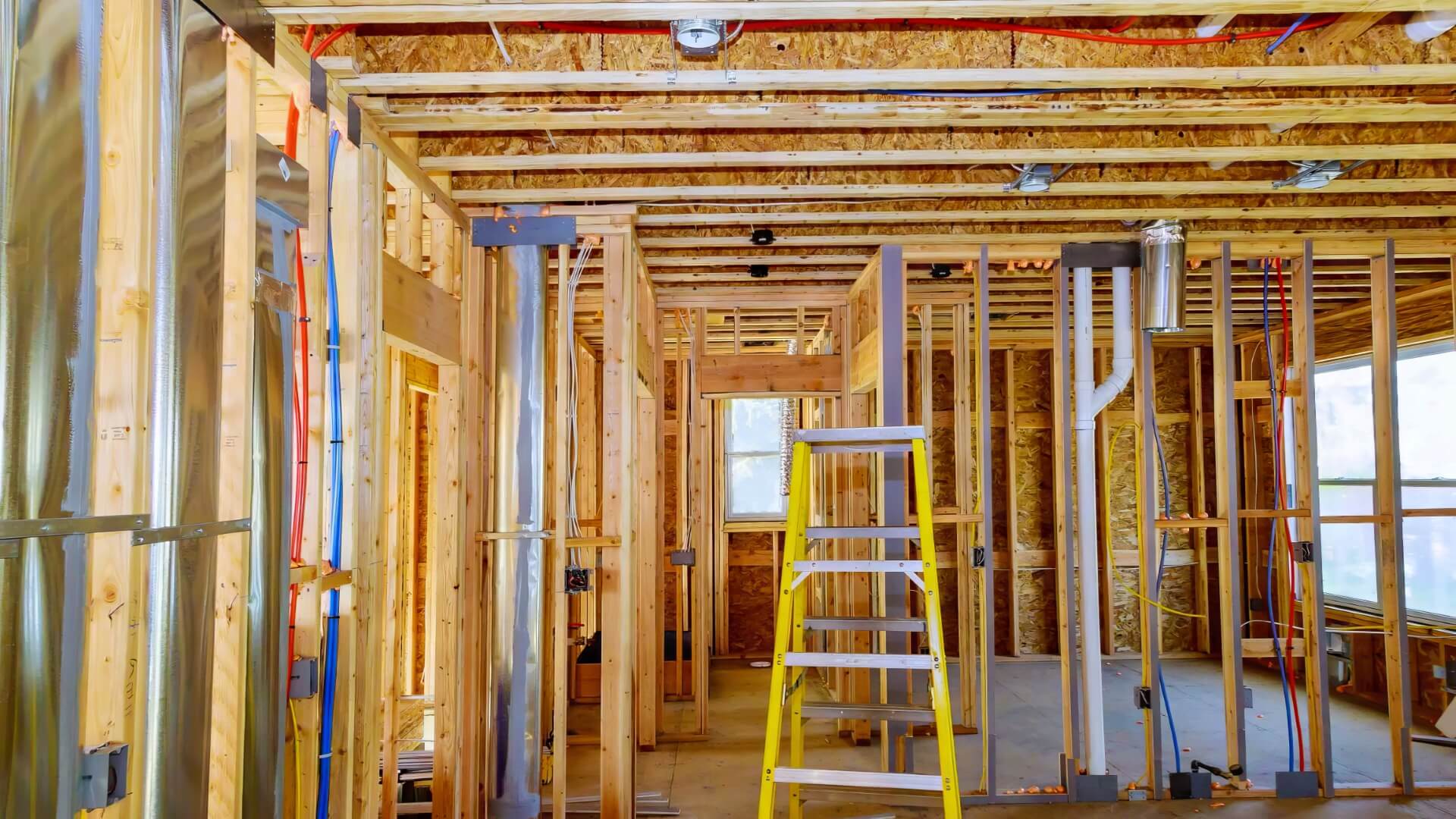Introduction to Gas Fitting
Gas fitting involves the installation, maintenance, and repair of natural gas and LPG systems in diverse settings. It is a highly specialised trade that requires extensive training and certification to ensure compliance with strict safety regulations.
Our licensed gas fitters at Beecroft Plumbing possess the required expertise and tools to service gas appliances and pipework securely and efficiently, always prioritising gas safety. We stay current with the newest standards and best practices to ensure all our gas projects meet regulations.
Some of the key tools and equipment utilised by our gas fitters include pipe cutters, flaring tools, regulators, analyzers, leak detectors and a range of hose fittings and valves. Correct use of these tools, particularly handling welding hoses, is crucial for leak prevention, optimal system function, and community safety.
This article details the essential tools and equipment for domestic and commercial gas fitting. We will examine how these devices contribute to effective, safe and legally compliant gas system installation and repairs.
Essential Hand Tools
Gas fitters rely on an array of specialised hand tools, including hose fitting tools, to safely and efficiently carry out installations and repairs to protect your home or business from gas-related issues. Some common essential hand tools include:
- Pipe wrenches - Used for assembling and tightening pipe joints and fittings. Ensuring pipes are properly secured prevents dangerous leaks.
- Screwdrivers - Help secure appliance components and access restricted areas during servicing. A variety of screwdriver types are required for different applications.
- Pliers - Essential for cutting, bending and flaring copper pipes to custom shapes and sizes.
- Hammers - Aid in adjusting and securing fittings and driving pins where required.
- Hex keys - Used for fastening gas appliance fixtures, especially in commercial settings.
Wrenches
Wrenches, due to their versatility, are commonly used for assembling and tightening pipe connections. The main types of wrenches used include:
- Pipe wrenches - Features adjustable jaws to grip and turn pipes. Allows applying high levels of torque when securing fittings.
- Basin wrenches - Designed for accessing and tightening nuts in confined areas like under sinks.
- Chain wrenches - Useful for installing gas lines and appliances to avoid damage to pipework surfaces.
All gas fitting tools, especially wrenches, should conform to Australian Standards for safety assurance.
Proper handling and care of wrenches also reduces the risk of leaks, breakages or injury. Our gas technicians undergo training to expertly select and utilise the right wrench for each application.
Pipe Cutters
Pipe cutters, crucial for gas fitting, accurately trim pipes to required lengths for installation or repairs. The key types of pipe cutters utilised by gas technicians include:
- Rotary pipe cutters - Feature sharp cutting wheels that rotate around the pipe for precise, clean cuts.
- Hacksaw cutters - Manual hand saws that can access confined spaces. Useful for cutting pipes in place.
- Pipe slice cutters - Designed for quicker, efficient straight cuts that require minimal reaming or deburring.
Quality pipe cutters are vital for proper pipe system assembly. Imprecise cuts can lead to leaks if pipes don’t join correctly.
Flaring Tools
Flaring tools are specially designed devices used by gas fitters to flare, or shape, the ends of pipes. This process creates a funnel-like end that facilitates secure joining with fittings and valves.
The key types of flaring tools include:
- Pipe flaring tools - Features a clamp to hold pipes while a flaring block shapes the end into a flare.
- Yoke-style flaring tools - Designed for flaring tubing in tighter spaces with hex died and screws for adjustments.
- Hydraulic flaring tools - Offer more torque and power for thicker, larger pipes.
Quality flaring helps achieve leak-proof seals at joints. Under the AS 5601 Gas Installations standard, all flaring tools must meet strict specifications for flare dimensions, materials and calibration.
Our gas technicians are highly trained in using flaring equipment to Australian Standards. We only utilise top-rated commercial flaring tools for reliable, precision flaring that facilitates compliant, durable gas system joints.
Power Tools
Power tools are essential for plumbers gas fitting tasks, efficiently carrying out work especially in commercial settings. They allow our technicians to complete installations and repairs safely and productively.
Common gas fitting power tools we utilise include:
- Threading machines - Used to cut precise threads that allow pipes to securely seal together. Help mount regulators, valves and other fittings.
- Drills - Aid accessing restricted areas and drilling pilot holes for mounts and clamps.
- Reciprocating saws - Useful for quickly cutting pipes to length in situ where required.
Our industrial-strength power tools comply with Australian standards, ensuring the safety, quality, and reliability vital for expert gas technicians. Proper handling and maintenance ensures efficiency and prevents hazards.
We mandate comprehensive training for all our gas fitters in the appropriate use of power tools.
Threading Machines
Threading machines play a vital role in gas fitting by precisely cutting male and female threads on piping and fittings. This allows components to securely screw together for gas-tight seals.
High-quality threading machines feature automatic feeds, variable speed controls and customisable dies to tailor threads for different fittings and materials. Our commercial grade gas threading equipment adheres to AS/NZS 3500 for construction, performance and safety.
Following manufacturer’s instructions when using threading machines is essential to prevent accidents and create precise, compliant threads. Our licensed technicians receive extensive training to operate threading equipment safely and efficiently, ensuring gas connections are tightly sealed.
Tube Benders
Tube benders are specialised tools used by gas fitters to bend pipes to fit specific layout requirements without distorting or crimping them. Producing smooth, rounded bends in hoses fittings prevents turbulent gas flow and leakage risks.
The key types of tube benders gas technicians rely on include:
- Lever benders - Used for bending smaller diameter tubing up to 90 degrees via manual leverage force.
- Hydraulic benders - Feature powered hydraulic cylinders that generate up to 10,000+ psi to bend large pipes.
- CNC benders - Computer numerical control tube benders offer precision accuracy for complex bends.
A quality bend is crucial to ensure your gas flow is uninhibited while minimising corrosion and hazards. Our Our gas fitters are comprehensively trained in the Australian Standard-compliant operation of tube bending machinery.
Gas Detection and Measurement
Proper gas detection and measurement tools are essential for the safety of professional gas fitting. Devices like flue gas analysers, manometers and leak detectors enable gas fitters to thoroughly test systems for leaks, verify pressure readings and ensure combustion by-products fall within acceptable limits.
- Electronic gas leak detectors - Features sensors that detect even minute gas leaks for rapid leak identification.
- U-tube manometers - Highly accurate instruments for quantifying gas pressure flows against a column of liquid.
- Flue gas analysers - Portable devices that assess combustion exhaust gases to optimise burner tuning.
In 2017, 240 reported gas leaks in NSW originated from faulty components or incorrect installations. Our thorough leak checks and equipment calibration to Standards Australia guidelines mitigate such risks.
Leak Detectors
Gas leak detectors are vital safety devices used by technicians to identify potentially hazardous leaks in gas systems. They feature sensors that detect methane or propane gases.
Key types of leak detectors include:
- Electronic leak detectors - Portable, battery-powered units ideal for rapid leak detection across residential, commercial and industrial sites.
- Ultrasonic detectors - Emit high-frequency soundwaves to identify high-pressure gas leaks based on frequency changes.
- Flame ionisation detectors - High sensitivity detectors calibrated specifically for natural gas or LPG leaks.
Pressure Gauges
Pressure gauges are vital instruments used in gas fitting to accurately measure and monitor gas system pressure. They ensure gas is flowing within safe tolerances and identify risks like leaks or insufficient supply.
Types of pressure gauges used include:
- Dial pressure gauges - Display pressure readings via needle movements against a graded dial face. Useful for constant pressure monitoring.
- Digital pressure gauges - Provide precise digital pressure readouts and are simpler to calibrate to standards.
- Differential pressure gauges - Measure changes between gas input and output pressure to assess system functionality.
Our digital gauges consistently deliver precision, aligned with regulatory standards.
Flow Meters
Flow metres are essential measurement tools making it much easier to gauge real-time gas flow rates in pipework during gas fitting. They provide vital data to appropriately size and configure appliances while enabling leak detection and monitoring for optimum safety.
Common gas flow metre types include:
- Rotary gas metres - Contain impellors to mechanically quantify low flow rates. Often used for residential billing.
- Turbine metres - Have rotating turbines generating electrical pulses to calculate high volume flows in industries.
- Ultrasonic metres - No-moving-parts designs using sonic transducers to determine flow from transmission times.
Gas flow data aids proper burner and pipe sizing to safely accommodate required capacities. Our technicians can diagnose issues like leaks, blockages or undersized piping if out-of-parameters readings occur post-installation. We only use precision flow metres fully compliant with Australian standards.
Safety Gear
The safety of gas fitters is paramount when working with hazardous gases. Personal protective equipment (PPE) is crucial for preventing injuries and possible long term health impacts.
Key gas fitting safety gear includes:
- Fire resistant clothing - Protects skin from burns.
- Safety glasses - Prevent eye injuries from debris when cutting pipes.
- Ear plugs - Shield hearing from loud equipment like pipe threaders.
- Hard hats - Worn when risk of falling objects exists overhead.
- Gloves - Leather and cryogen gloves protect hands and improve grip.
Work Health and Safety regulations require employers to supply appropriate safety gear to reduce site risks.
Gloves
Gas fitters utilise specialised gloves designed to protect their hands when handling gas hoses fittings during installations and provide improved grip on tools and components. Key types of gloves include:
- Leather rig gloves - Durable leather offers abrasion protection when handling pipes and insulation.
- Cryogenic gloves - Essential when working with extreme cold liquids like LPG. Insulated for thermal protection.
- Chemical resistant gloves - Protect against pipe joint compounds and solvents. Made of neoprene or nitrile rubber.
- Cut resistant gloves - Used alongside sharp tools to mitigate risks of lacerations.
Gloves must meet AS/NZS 2161 for occupational protective handwear. Proper hand protection is crucial for remaining injury-free.
Glasses
Gas fitters wear protective eyewear to shield their eyes from hazards when working. Key glasses utilised include:
- Safety glasses - Feature impact-resistant lenses to prevent eye injuries from debris when cutting or flaring pipes.
- Goggles - Completely enclose eyes to protect against chemical splashes from pipe compounds.
- Welding shields - Essential when welding pipes to prevent retina damage from ultraviolet light.
Our eyewear complies and is optically correct.
Quality vision protection ensures our technicians avoid preventable, potentially career-ending eye trauma when handling gas hoses and carrying out gas services.
Ear Protection
Excessive noise exposure is a major safety hazard for gas fitters, especially when using loud power tools like pipe threaders or plasma cutters. Prolonged noise can permanently damage hearing over time.
To prevent noise-induced hearing loss during tasks such as welding with a single oxygen hose, as mandated in the Australian WHS Noise Regulations, we utilise sound-dampening ear plugs and earmuffs that adhere to AS/NZS 1270. Key types include:
- Reusable ear plugs - Flexible silicone plugs fitting the ear canal to lower noise 15-30 decibels.
- Disposable foam ear plugs - Compress for insertion to block sound. Useful as backup protection with earmuffs.
- Earmuffs - Completely enclose the ears, reducing noise levels by up to 30 decibels for safe exposure.
Our gas technicians properly insert ear plugs and adjust earmuffs for maximum protection. Maintaining hearing health is vital for site communication and safe working.
Standards and Best Practices
Gas fitting work must adhere to strict industry standards and best practises to ensure safe, compliant and effective outcomes. The key standards include:
- AS/NZS 5601 Gas Installations - The main standard covering materials, design, construction, testing, commissioning and decommissioning of gas systems in Australia and New Zealand.
- AGA Codes - Technical standards published by the Australian Gas Association that cover specific components like gas appliances, pressure regulators and metering skids.
- AS 4575 Gas appliance compliance and certification - Outlines processes for certifying gas appliances comply with all requirements prior to sale or installation.
Our licensed gas technicians at Beecroft Plumbing ensure compliance with the current standards for assured safety and quality.
We continually undergo additional training and accreditation testing to ensure our competence. Rigorous compliance checks also validate completed installations function optimally while posing no risk.
AS 5601 Gas Installations
AS 5601 Gas Installations is the key Australian standard covering the design, construction, installation, testing, commissioning and decommissioning of gas piping systems and appliances. Compliance with AS 5601 is mandated under legislation across all Australian states and territories.
This crucial standard ensures gas fitting work meets strict safety and performance regulations. It stipulates requirements for materials, piping sizing, pressures, ventilation, leakage protection, testing procedures and certification. Compliance helps guarantee operational safety, prevent leaks and explosions, and validate correct appliance functioning.
Beecroft Plumbing’s licenced gas fitters strictly follow the AS 5601 2021 edition, always equipped with proper personal protective gear, for all installation, maintenance, and repair work.
AGA Codes
The AGA codes are technical standards that detail specifications for materials and components in natural gas and LPG systems.
Adherence to the AGA codes helps ensure uniformity, safety and quality across the industry. All gas appliances, pressure regulators, valves, pipework and accessories installed in Australia must comply with relevant AGA codes.
Key AGA standards gas fitters reference include:
- AGA AS 4554 - Gas domestic appliances
- AGA AS 4617 - Gas pressure regulators for domestic, small commercial and industrial applications
- AGA AS 4643 - Industrial and commercial gas-fired appliances
Compliance provides assurance to both gas fitters and consumers that gas systems meet rigorous safety criteria.
Conclusion
In summary, gas fitting is a complex field that demands expertise in specialised tools and equipment to ensure safe and legally compliant outcomes. Proper training in and responsible operation of essential devices like pipe cutters, flaring tools, analyzers, threaders and benders enables gas technicians to carry out installations safely while meeting Australian standards.
Strict adherence to codes and best practises, coupled with stringent leak checks and pressure testing, guarantees gas systems function optimally without posing risks. Investing in top-quality industrial equipment and focusing on continuous improvement, Beecroft Plumbing delivers gas services that uphold community safety.
For expert residential and commercial gas fitting services provided by certified professionals, reach out to Beecroft Plumbing at 1300 349 338 or jobs@beecroftplumbingservices.com.au.






